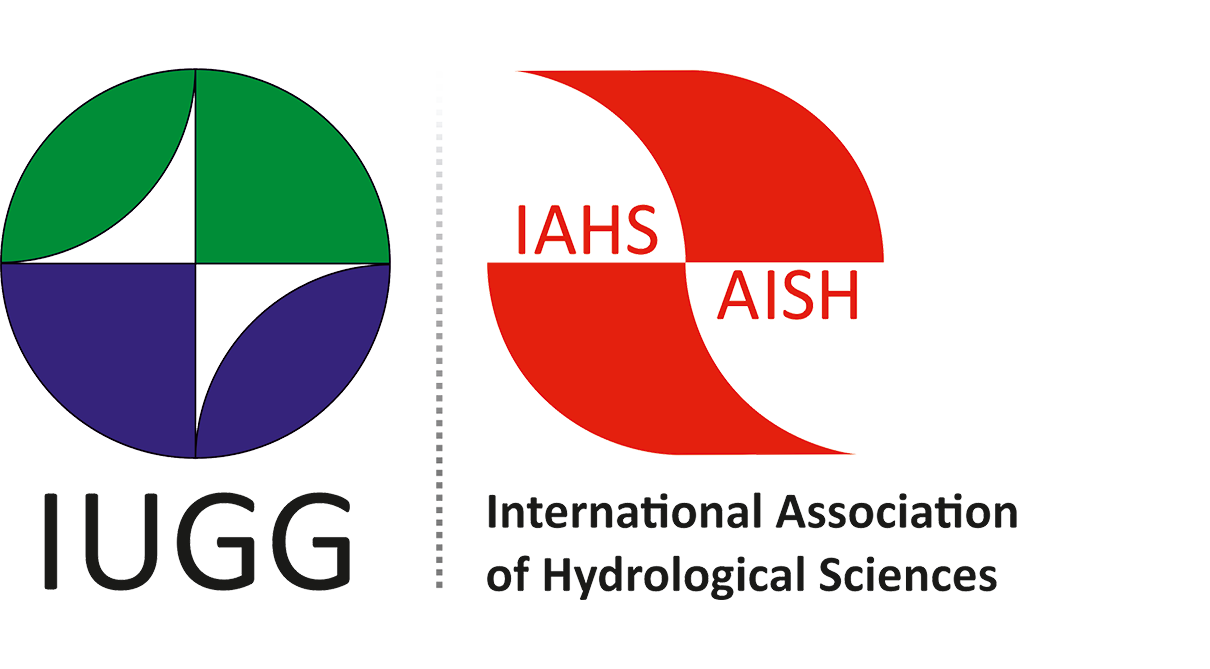Publications
IAHS publishes Hydrological Sciences Journal and three book series:
- the Benchmark Papers in Hydrology series that collects together, by theme, the seminal scientific papers that provided the foundation for modern hydrology.
- the "Red Books" or Proceedings and Reports series and from volume 369 (2016) the new online open-access proceedings journal, Proceedings of the International Association of Hydrological Sciences, PIAHS.
- the "Blue Books" or Special Publications series.
Details of all books are provided below. Papers in Red Books (except 24, 25, 26 and 50) are available to view/download as pdfs. To directly access the different series, for example Blue Books, use the 'Category' option in the Search area. To search for specific books by title, ISBN, Editor or publication number use the facility below. To search for specific papers/authors use Paper Search. Books can be purchased online by clicking on the shopping basket to purchase. Members receive discounts. The Catalogue and June 2015 Update can be viewed/downloaded.
HSJ Digest
The HSJ Digest is our bi-monthly synopsis of the latest news from Hydrological Sciences Journal. Find links to all the articles published in the latest issues of the Journal, together with the Editors’ choice of featured articles and various other news and noteworthy items.

Enquiries: [email protected]
tel: +44 1491 692515
IAHS, UKCEH Wallingford, Oxfordshire, OX10 8BB, UK
Palaeohydrology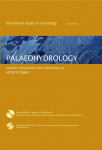 Author / Editor: Victor R. Baker Price: £75.00 Palaeohydrology - Victor R. Baker Palaeohydrology originated with and continues to have a strong focus on palaeofluvial processes, especially palaeoflooding, and this is reflected in eight sections:
An excellent resource for graduate and post-graduate level courses in hydrology and hydro-geomorphology, reproducing many important papers that are otherwise difficult to access. Victor R. Baker is Regents Professor in Hydrology and Water Resources at the University of Arizona, USA, and holds joint chairs in the departments of Geosciences and Planetary Sciences there. His research interests broadly concern palaeohydrology and related aspects of geomorphology, with a particular focus on flood processes. He also works in the area of planetary geomorphology and on issues that involve Earth science in relation to public policy, the environment and philosophy of science. IAHS arranged for copyright permission to reproduce the papers included in this volume as print copy. We are unable to provide digital versions. | Isotope Hydrology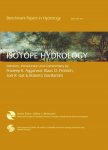 Author / Editor: P. K. Aggarwal, K. O. Fröhlich, J. R. Gat & R. Gonfiantini Price: £70.00 Isotope Hydrology - P. K. Aggarwal, K. O. Fröhlich, J. R. Gat & R. Gonfiantini Isotope Hydrology uses stable and radioactive isotopes of water and its dissolved constituents to trace hydrological processes, including the pathways of rainfall and snowmelt to, and interactions between, aquifers, lakes and rivers. The potential of using stable isotopes of water was recognized in the 1930s, but not fully explored until the 1950s, since when the scope and nature of isotope applications in hydrology have blossomed. Improvements in measure¬ment techniques have facilitated use of isotopes in many contexts, and isotope hydrology has become mainstream, as documented in this volume of reprinted papers and accompanying commentaries. Section A. Fundamentals includes the first papers on deuterium, 18O and tritium contents in natural waters (Friedman, 1953; Epstein & Mayeda, 1953; Libby, 1953), and Craigâas (1961) seminal paper which defined the global meteoric water line used to understand the source of natural waters. The papers that shaped our understanding of isotopes in precipitation and global circulation, e.g. Dansgaard (1964) and Craig & Gordon (1965), come in B. Atmospheric Water Cycle. The early interpretation of isotope sequences in rock and ice, including the iconic Greenland ice sheet core (Dansgaard et al., 1969), are included in C. Palaeoclimates. D. River and Lake Hydrology contains influential papers on the use of isotopes to determine the origin of stream and lake waters. E. Groundwater deals with the origin of groundwaters, the earliest use of tritium, 14C, 81Kr and 36Cl to date them, and isotope applications in pollution and groundwater remediation. An excellent resource for graduate and post-graduate level courses in hydrology, reproducing many important papers which are otherwise difficult to access. IAHS arranged for copyright permission to reproduce the papers included in this volume as print copy. We are unable to provide digital versions. |
Forest Hydrology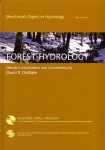 Author / Editor: David R. DeWalle Price: £65.00 Forest Hydrology - David R. DeWalle Forest Hydrology emphasizes the influence of forests and their management on the regime, quantity and quality of water. The volume provides an overview of the development of the discipline, with the early review by Zon (1927) and seminal contributions such as the Wagon Wheel Gap paired catchment study (Bates & Henry, 1928), and Kittredge (1948) on interception and stem flow, among the 29 Benchmark papers. IAHS arranged for copyright permission to reproduce the papers included in this volume as print copy. We are unable to provide digital versions. | Hydro-Geomorphology, Erosion and Sedimentation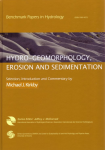 Author / Editor: Michael J. Kirkby Price: £70.00 Hydro-Geomorphology, Erosion and Sedimentation - Michael J. Kirkby In the short term, hydrology responds to the topography, soils and vegetation of the landscape, but over longer time spans the entire landscape is moulded by the flow of water. The process scale ranges from the splash erosion by individual raindrops to the accumulation of sediment as alluvial fans, to the evolution of drainage networks. Kirkby presents a systematic analysis of the relationships between hydrology and geomorphology with commentaries on the papers which have been most influential in the development of research at the hydrology/geomorphology interface. Thirty-seven papers are reprinted in full or in part, the majority published pre-1970, including early contributions by Fisher (1866), Davison (1889) and Gilbert (1909), and seminal papers by Hack, Strahler, Wolman & Miller, and Melton, among others. An excellent resource for graduate and post-graduate level courses in geomorphology and hydrology, reproducing many important papers which are otherwise difficult to access. IAHS arranged for copyright permission to reproduce the papers included in this volume as print copy. We are unable to provide digital versions. |
Rainfall-Runoff Modelling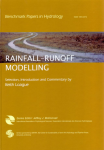 Author / Editor: Keith Loague Price: £65.00 Rainfall-Runoff Modelling - Keith Loague This volume reprints 30 papers that exemplify the best in rainfall-runoff modelling. It charts developments from Mulvany's (1851) rational method for estimating peak flow, probably the first rainfall-runoff model, up to 1989. Benchmark papers on other empirical approaches, such as Sherman (1932) and Mockus (1949), are reprinted, as are Richards (1931) and Smith & Parlange (1978), the innovative contributions of Alan Freeze, and later Keith Beven, and the seminal papers of Moore & Clarke (1981) and Abbott et al. (1986). IAHS arranged for copyright permission to reproduce the papers included in this volume as print copy. We are unable to provide digital versions. | Riparian Zone Hydrology and Biogeochemistry Author / Editor: T. P. Burt, G. Pinay and S. Sabater Price: £65.00 Riparian Zone Hydrology and Biogeochemistry - T. P. Burt, G. Pinay and S. Sabater Study specifically of riparian zones is relatively new in hydrology, and while the oldest benchmark paper selected for this volume dates to 1936, several of the others were published in the 1970s and 1980s. Burt, Pinay and Sabater introduce them with a review of the role of the riparian zone. Its services as a buffer for nitrates and other agricultural and industrial pollutants has focused the attention of ecologists and hydrologists. It is an ecological boundary between terrestrial and aquatic environments, but also a distinct ecotone because of the intimate connection between the two. The 36 benchmark papers are grouped under the topics Landscape Ecology, Hydrology of the Riparian Zone, Linking Riparian Zone Hydrology to Solute Transport, Biogeochemical Processes and Methods, Riparian Buffering of Surface and Subsurface Flows, and In-stream Processes. Together, the reprinted papers and the commentaries by the editors chart the breakthroughs in the development of this important. IAHS arranged for copyright permission to reproduce the papers included in this volume as print copy. We are unable to provide digital versions. |
Groundwater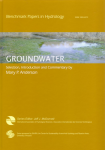 Author / Editor: Mary P. Anderson Price: £55.00 Groundwater - Mary P. Anderson Mary Anderson's selection and the commentaries that she has prepared to accompany the 35 reprinted papers, detail the development of groundwater hydrology during the 20th century. The fundamentals are introduced with a translation of Darcy's (1856) experimental results that led to Darcy's law, as well as classic papers by Meinzer, Theis and Hubbert, among others. The development of pumping test theory and practice, approaches to estimating aquifer parameters in the field, and flow system analysis are dealt with. Papers reflecting early concerns regarding quantification of uncertainty, how recognition of groundwater interaction with surface water grew, and early research on contaminant occurrence and transport, are included. Slichter's (1905) seminal contribution that identified dispersion in the field, and Skibitzke & Robinson's (1963) laboratory findings, are linked with more recent attempts to represent dispersion and heterogeneity with models. IAHS arranged for copyright permission to reproduce the papers included in this volume as print copy. We are unable to provide digital versions. | Evaporation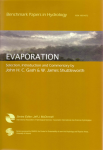 Author / Editor: John H. C. Gash & W. James Shuttleworth Price: £40.00 Evaporation - John H. C. Gash & W. James Shuttleworth The development of evaporation measurement techniques are documented first, commencing with the Wagon Wheel Gap catchment water balance (1921), through mass budget to water transfer methods, and use of scintillometry. Dalton's seminal essay On Evaporation (1802) starts the selection of papers on evaporation estimation, which then covers atmospheric controls on the evaporation process (the original Penman and Thornthwaite papers are reproduced), vegetation controls via transpiration and interception, and finally evaporation as a component of the global climate system. The Commentaries explain the context and significance of each paper. IAHS arranged for copyright permission to reproduce the papers included in this volume as print copy. We are unable to provide digital versions. |
Streamflow Generation Processes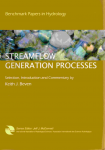 Author / Editor: Keith J. Beven Price: £40.00 Streamflow Generation Processes - Keith J. Beven Keith Beven's selection of 31 papers on the theme of Streamflow Generation Processes span the period from 1933 to 1984, commencing with Hortons' early papers on infiltration and on maximum groundwater levels. With the aid of the Introduction and Commentaries, they provide a stimulating insight to developments in this part of the field of hydrology. IAHS arranged for copyright permission to reproduce the papers included in this volume as print copy. We are unable to provide digital versions. |
